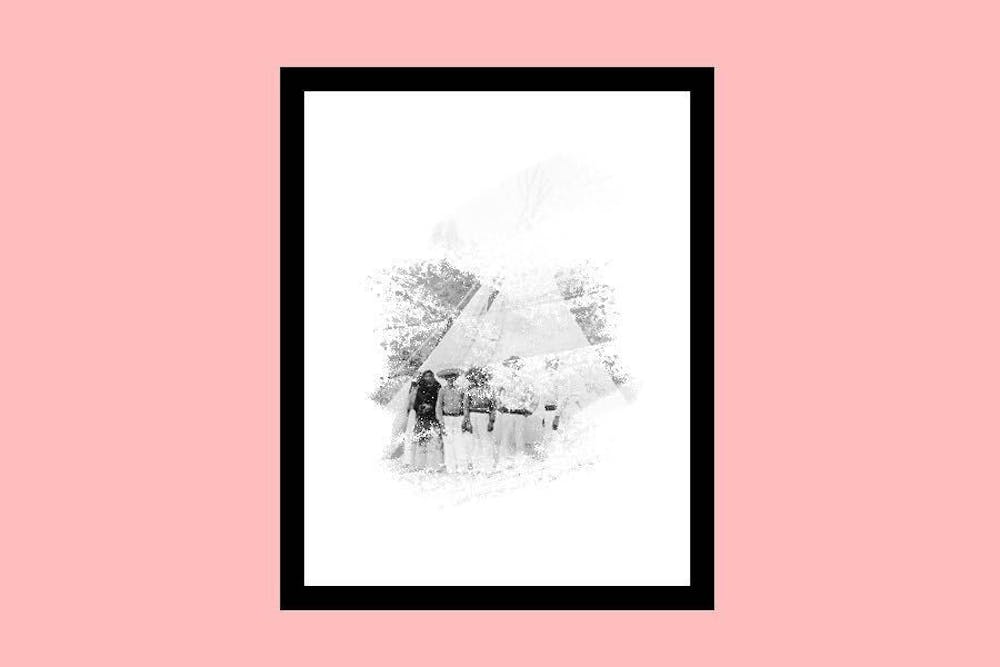They’ve had to learn everything about their culture on their own terms: the people around them, the articles their search engines generate.
But never a classroom.
Ancestral knowledge is a privilege not afforded to all. Not everyone can crack open a history textbook to pictures of faces like their own.
The Yaqui, or Yoeme, people endured great pains at the hands of colonization. In spite of that great pain, the Yaqui have been dogged in keeping their sacred culture alive.
The north side of the colonial-drawn border does not tell those stories.
At the beginning of the 20th century, hundreds of thousands of men, women and children were crossing the U.S.-Mexico border into Arizona to seek asylum from persecution. Porfirio Díaz, a seven-term Mexican president and dictator who held office for 31 years, escalated the government’s actions to “pacify” the Indigenous people along the Hiak Vatwe or the Rio Yaqui. Mexico, a settler-colonial state, committed genocide against and enslaved Yaqui people in an effort to remove them from their ancestral lands.
Those who rebelled against the government were met with death or slavery. Leaders like Cajeme, who led a movement to have a sovereign nation in the state of Sonora, were imprisoned and murdered after being paraded through the towns near the Yaqui River. Those who were enslaved were sent to the Yucatan Peninsula to work. Surviving meant finding a new home across what is now the Mexico-U.S. border.
These stories are not printed in textbooks or included in curriculum, but they are told in the faces of the people in my community. Growing up in what is now Southside Tucson, one of the areas to which Yoeme asylum seekers migrated, I learned from my family in the Pascua Yaqui Tribe, a federally recognized community of the Yoeme people, the history long-forgotten.
Arizona would not be the state it is today without the contributions of the Yoeme and yet no acknowledgment is made when educating the youth of the state built on the backs of the refugees. This has a tidal wave effect of erasure across classrooms, including ASU’s.
A lack of in-depth education of Indigenous people’s history goes beyond ASU and is a concern nationwide as our higher education institutions continue to pick and choose what is “academic” or important. It’s a reminder of who these spaces were made for and whose stories their coursework is tailored to tell. ASU is an educational institution with its pillars rooted in the same white supremacy that created the mass migration and genocide in Sonora. Efforts have been made to rectify this but it has been a slow and uphill battle.
ASU’s campuses overlap with the areas where Yaqui history took place and surround the town of Guadalupe, a settlement of the Pascua Yaqui Tribe. The University also takes up space in the Salt River Valley on ancestral territories of Indigenous peoples, including the Akimel O’odham (Pima) and Pee Posh (Maricopa) Indian Communities.
With a presence that impacts tribal communities across the state, ASU should prioritize teaching Yaqui and Yoeme history, but it does not.
Noah Huerta, a senior studying journalism with a focus in public relations, currently serves as the president of the Native American Journalists Association chapter at ASU. He and his family, all of Pascua Yaqui descent, are lifelong residents of Guadalupe.
“I haven’t learned anything about the Yaqui or Yoeme people in any of my public school education,” said Huerta. “Everything that I know is from my own studies and searches or from what I’ve heard in my hometown of Guadalupe.”
This is a common answer many Yoeme have in response to questions regarding how they were first taught about their culture in a learning environment. Without the support of the public school system in Arizona, the Pascua Yaqui tribe relies on the time, memories and resources of their own community to bridge the gap in educating their youth on the rich history and tradition of their culture.
“We should be taught Yaqui history, especially in Arizona. The Yaqui tribe has been here for a long time due to mass migration because the Mexican government was committing genocide,” Huerta said. “There are huge Yaqui communities in Guadalupe and southern Tucson. Teaching our history would benefit the youth of our communities.”
ASU currently has programs to meet this academic hole in the curriculum for many Arizona students, yet it does not seem to have a proactive approach to implementing education that would responsibly incorporate the Indigenous perspective and shed light on the Yoeme people. Classes at the Transborder school offer a look into borderlands history, but specific curriculum on Yaqui migration and genocide is not taught throughout the entire Transborder program.
ASU has a responsibility to the Indigenous people of this state, including the Yoeme people, for enduring horrific hardships in the creation of both of the settler nations that make up our borderlands today.
“In classrooms at ASU, I often feel like an outsider. Teaching, especially in history courses, usually comes from a very Eurocentric point of view. Telling the stories of not only the Yaqui people but also other Native tribes would make me feel better represented and seen,” Huerta said.
Catalina Flores, a senior studying anthropology and family and human development, said she also feels underrepresented in the classroom, a feeling she first grappled with in her youth. Flores is a Yoeme from Tucson, where her ancestors arrived during the Mexican Revolution along with hundreds of other Yoeme seeking asylum from the hardships of war and persecution.
Flores grew up in Barrio Libre, a Yoeme community in South Tucson that is home to many other immigrant communities, including a large population of Latinx people.
“Growing up, I felt like I wasn't supposed to be talking about (Yoeme migration and genocide) openly in the classroom and it made me feel like I wasn't represented, kind of like hiding in the shadows at times,” she said.
Though a sense of community exists in Tucson, Flores felt alienated because her peers did not share the same experiences, nor could they sympathize with her ancestral traumas due to a lack of education.
“There's been a shift toward more inclusivity of Indigenous people overall, but there's still a lot of work that needs to be done in terms of educating people and letting people know that we're still here,” Flores said.
She said she realized sharing her ancestors’ history is a way of healing and creating a more widespread understanding of the hardships Yoeme people lived through.
Flores detailed the stories passed on from her elders, and how painful it was for her family and for many others who experienced the same hardships. She spoke of family whose location she is still unsure of and the questions she and her family often pondered. Are they alive? Did they get sent off to the Yucatan Peninsula as many Yoeme were?
History details individual experiences and should work as a way to create a dialogue on both the high and low points of humanity.
Instead, history has become a form of indoctrination by those who write it. Though history by nature is unbiased, those who decide which pieces of history are told are not unbiased in their decisions. For current and future children of the state of Arizona and the many students who have come and gone, the version of history presented lacks the depth to recognize the world as it is.
To knowingly pick and choose parts of history to teach to young minds is an atrocious act of erasure, and the victims are the souls of the people whose stories are not told. Teaching the Yoeme migration and genocide in schools will only create a better understanding of the world around us, and help to create a more equitable community for all.
Reach the columnist at rjromer8@asu.edu or follow @RaphaDeLaG on Twitter.
Like State Press Magazine on Facebook and follow @statepressmag on Twitter.




